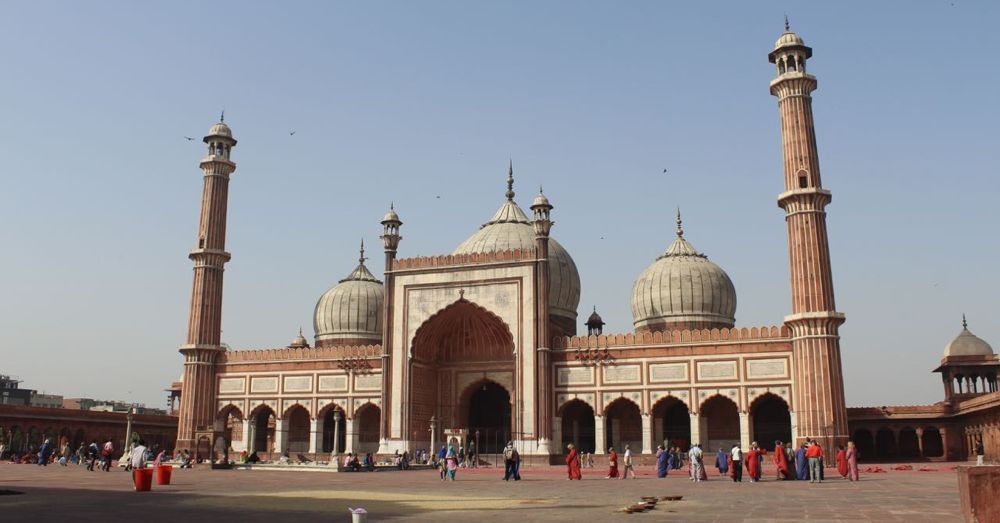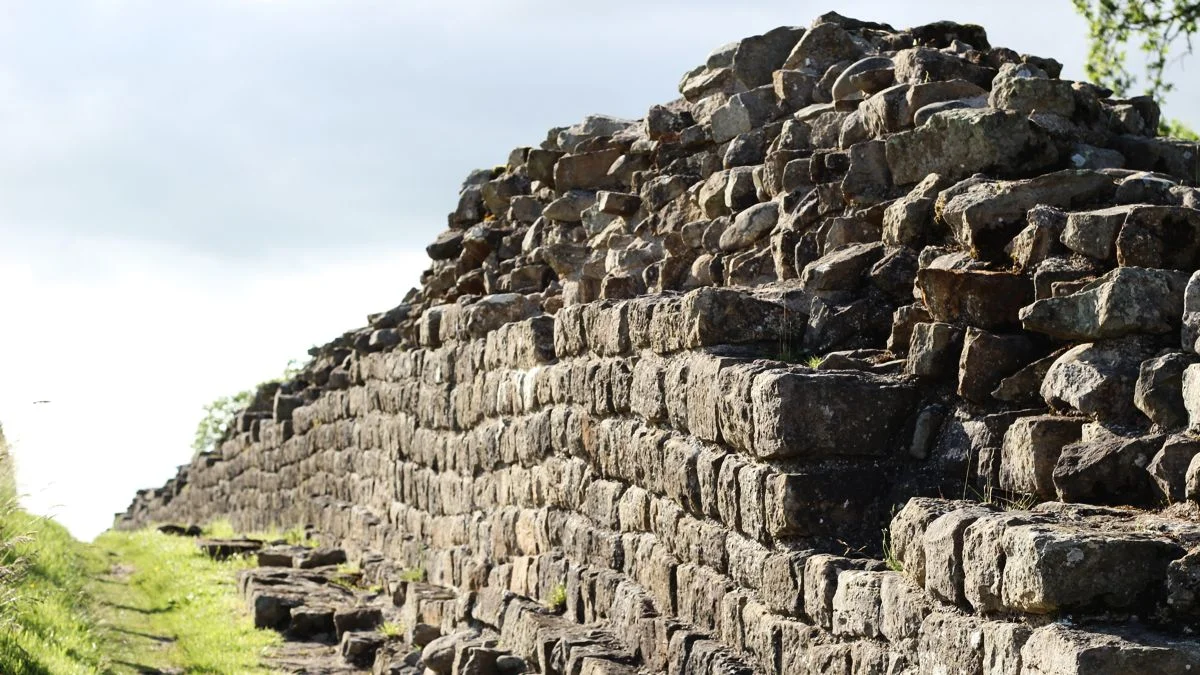Friday, 27-02-2015. Day 191.
Mosques, Markets, Mughals.
Traveling about India was a daunting prospect, and during the research into our options, we found LAL Tours, and the rates were mighty reasonable. So we booked a tour around the Golden Triangle (which is quite different from the Golden Triangle we toured in Thailand) that covers the cities of Delhi, Agra, and Jaipur.
After we landed at Delhi, we made our way through immigration. We had applied for and been been granted Indian Tourist Visas on Arrival, so it should have been a matter of routine to clear immigration, but it took some time—especially when the fingerprint scanners wouldn't work. In general, the immigration officials couldn't be accused of being in a hurry, but we made it through without too much frustration.
Our driver, Rakesh (the owner of LAL), was there at the airport at midnight to pick us up and take us to our hotel. We got in pretty late, about 2:00 a.m. by the time we were in our room, and went right to sleep. Our Golden Triangle tour started in Delhi the next morning at 9:00 a.m.
Rakesh arrived right on time with our guide for the day, and soon we were off through the busy streets of Delhi to see some amazing sights. Delhi is a lot busier during daylight hours than at 2:00 in the morning. Streets were crowded with auto rickshaws powered by compressed natural gas (which were very similar to the tuk tuks of Cambodia and Thailand) and a lot of cars and stray dogs. Our guide told us that Delhi had 100,000 auto rickshaws, half a million dogs, and a quarter of a million monkeys.
A quick note on the whole guide situation. It was a bit of a grab bag. From what we understood, Rakesh would call ahead and reserve a guide through some government guide program. Because there are a lot of guides, he never knew who was going to get and some guides were better than others. This first guide reminded us a bit of our guide from the Cu Chi Tunnels in Vietnam. in that we were definitely on his tour, not necessarily ours.
Jama Masjid
This famous mosque in the heart of Old Delhi is the "third largest mosque" (we were unclear if that was in the world or in India) and is notable because it was commissioned by Shah Jahan, the fifth Mughal Emperor, who was also responsible for building the Taj Mahal (more on this in a later post) and the Red Fort in Delhi (which we didn't visit). Construction of the Jama Masjid took six years at a cost one million rupees (in 1650 rates).
Another side note here. Before this visit, we didn't really know anything about the history of India, especially the Mughal Empire, and our first guide didn't really go too much into the details (although he was big on how much things cost to build back in the day).
Before we could enter the mosque, our guide told us that if we wanted to take photos, we'd have to pay 300 rupees per camera, including cell phones.A large sign near the entrance of the mosque said the same thing, so we kept our phones in our pockets and used just one camera.
We were also told we couldn't wear shoes inside. This wasn't surprising; it was standard procedure when visiting mosques and temples throughout the world. But our guide told us we had to pay 100 rupees each to wear temple shoes, which was totally unnecessary. Almost everyone else just wore socks.
Once inside the mosque itself, which we were told is the most famous in all of India, was pretty amazing. The courtyard is huge, and is able to hold up to 25,000 worshipers. We were there when it wasn't being used for prayer, but here's an image of how it looks during prayer time:

Source: Wikimedia Commons
Visitors can climb the 130 steps of one of the minarets (the left one in the photos above) for 300 rupees each. We skipped the $20 and just took in the sights on the ground level. It was a very simple, spartan building, though the architecture was impressive, especially considering the building's age.
As we left, we had to tip the man guarding our shoes, but I don't think there was really much guarding going on. We didn't have any small notes, so our guide offered to handle the tipping chores for us. I questioned this, but he assured me he could get us better rates. It seemed a somewhat reasonable idea at the time, but in retrospect it was a dubious one. This was our first initiation into touring India: everyone wants to get paid for something, even if that something amounts to not much of anything. So carry plenty of small denomination rupee notes.
After we collected our shoes, we picked up three bicycle rickshaws and took a tour through Old Delhi.
Old Delhi and the Spice Market
I'm just going to say here that bicycle rickshaws in India are mighty uncomfortable. As our guide told us, there are a lot of dogs roaming the streets of India. We were warned there would be a lot of cows, too, but the only cows we saw on our tour were those that were pulling carts into the market. After a short ride, we stopped at a corner and hustled across the busy street to the spice market.
This place was bustling, and all the vendors were getting ready for the Holi (the festival of colors), which would be taking place in just one week. While we didn't see any of the famous colored powders here, people were selling flowers and betel leaf.
We stopped off at Mehar Chand & Sons (since 1917!) to browse their selection of spices and teas. There were a lot of good sights and smells, and we ended up buying a few cinnamon sticks, some vanilla, and a packet of tea spice.
Then our guide took us down the street where we walked through a place filled with bags of peppers. The capsaicin was thick in the air and settled into our nostrils and deep in the back of our throats. Many of the people walking through this narrow, dimly lit alley were, like us, chocking and coughing. A lot of the people working there wore masks.
We walked back through the spice market and, after some confusion in looking for our rickshaw peddlers, got back on our bikes and rode back through the old market, taking the scenic route back to Jama Masjid where we met Rakesh and started off to our next destination.
Raj Ghat
No visit to Delhi is complete without a stop at Raj Ghat, a memorial on the spot where Gandhi was cremated after his assassination in 1948. Our guide told us that the flowers are placed fresh each day in the summer and every few days in the winter months. In addition to the flowers, a eternal flame burns in the glass box behind the memorial.
(The stop also necessitated the removal of shoes and the tipping of a shoe guardian.)
India Gate
The India Gate is a memorial to all the soldiers of the British Indian Army who were killed in action during World War I and a few other wars that India was engaged in at that time. There are more than 13,000 names of soldiers inscribed on the gate, and an eternal flame burns under the arch in memory of the soldiers who died during the 1971 Indo-Pakistan War. We couldn't get close enough to see it, but we did get to see the empty stone canopy nearby that once held a statue of King George V.
Presidential Palace
After a brief stop for lunch, we headed over to the Indian Presidential Palace, which is at the end of a long, straight road (with the India Gate at the opposite end) which is lined on either side with mirror-image buildings. In stark contrast to the rest of Delhi we'd seen up until then, the roads were very wide and comparatively free of traffic.
Humayun's Tomb
From the Presidential Palace, we drove over to the tomb of Humayun, the second Mughal Emperor (the great-grandfather of the man who commissioned the aforementioned Jamal Masjid), which is a UNESCO World Heritage site. Humayun's Tomb, which is considered a blueprint for the Taj Mahal, was built in 1570 (some 125 years before the Taj Mahal) by Humayun's widow at a cost of 1.5 million rupees.
We hadn't known much about this place before we started planning for the India leg of our trip, and we're really glad we went. The tomb was really amazing. It was large, but very intricate in design. The multi-chambered building held not only Humayun's tomb but the tombs of his wife and many of his descendants.
UNESCO sites in India cost 250 rupees ($4 U.S.) to enter for anyone age 15 or older. Our guide had the foresight to pick up two tickets, which was nice. But I noticed that as he handed our two tickets to the ticket-taker, the guy didn't rip them as he had with the people in line ahead of us. Instead, he just lightly creased them before handing them back. At the end of the day, our guide gave us two used tickets, but there was some kind of under-the-table activity going on here..
This area also holds Isa Khan's Tomb, which predates Humayun's Tomb by more than 20 years. Isa Khan was some sort of important man in the ruling class that was in power before the Mughal Empire. Although the details were fuzzy here, I found it interesting these two structures could be found so close together.
Sales Opportunity Number One: Kashmir Rugs
We got dropped off at a local shop and handed off to a salesman who, along with two other gentlemen, ran us through a 30-minute presentation on the superiority of Kashmir rugs. When he was done, we were given the opportunity to buy some of these hand-made rugs for the low price of $3,000 U.S. Well, that wasn't going to happen as that was a good chunk of our operating budget for this this whole adventure. This would turn out to be a pretty routine aspect of the touring experience for the rest of the week.
After that was all done, our guide asked us if we wanted to see Qutb Minar, another UNESCO site. We did want to see it, but our guide told us it would take 45 minutes to get there. It had been a long day (especially after a lengthy sales pitch), we were tired from the day before, and the girls were starting to fade, so we passed on it.
But as it turns out, we misunderstood. The 45 minutes was the time it would take to get back to the hotel, and we passed Qutb Minar in just 15 minutes. But since we'd be leaving for Agra at 8:00 the next morning, it was probably the best decision to skip it for now. We'd have some time to check it out later in the week when we'd be returning to Delhi.
Notable Statistics:
- UNESCO World Heritage sites visited: 1 (19 cumulative)
- iPadographers: 3
- Dogs: A lot
- Puppies: 6
- Monkeys: A lot

Tom Fassbender is a writer of things with a strong adventurous streak. He also drinks coffee.



























